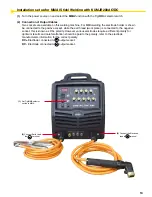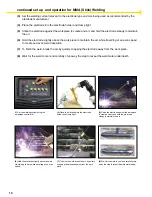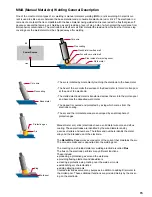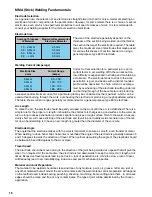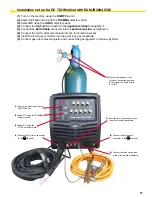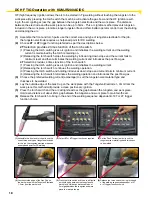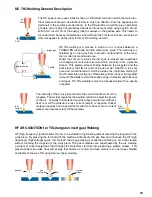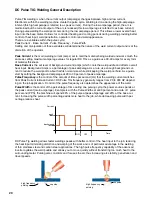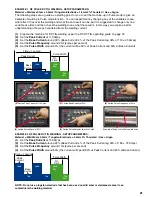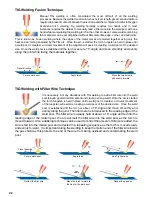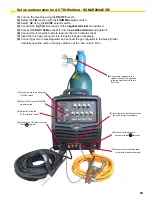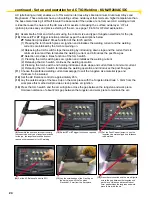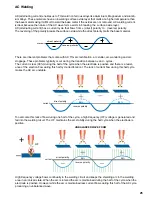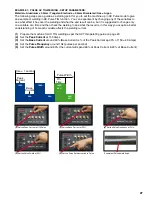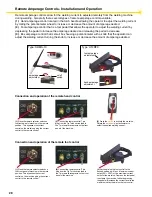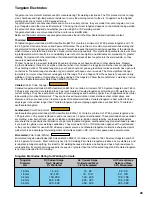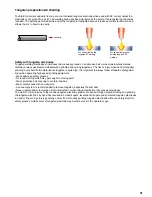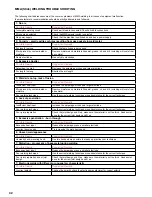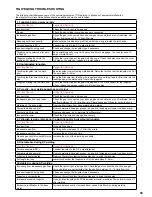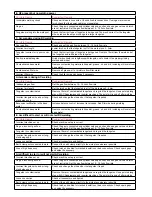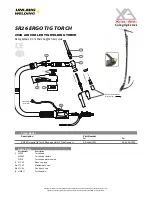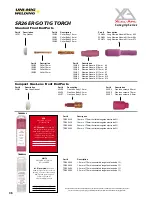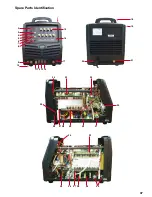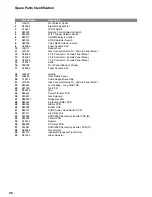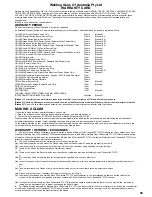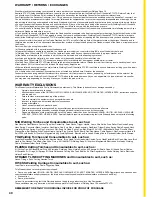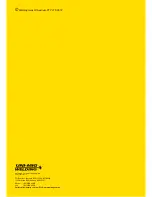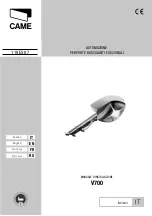
26
In older machines, a balanced current output wave was achieved using a large number of capacitors in
series or a battery in the welding circuit. Modern TIG power sources use electronics to create and maintain
a balanced wave and now most AC TIG power sources produce a square wave current output.
A square wave power supply can change the current from ele positive to electrode - negative very
quickly. This produces high voltage as the current switches polarities allowing the arc to restart easily. The
arc can be maintained without the use of high-frequency or any other arc stabilising methods.
The output current and voltage are controlled electronically so the amount of current electrode positive and
the amount of current electrode negative can be adjusted. This allows the welder to adjust the amount of
cleaning and the amount of penetration. This is achieved electronically by adjusting the balance control dial
on the welding machine. More current flow from the + direct polarity produces stronger arc energy and cur-
rent flow from the tungsten and is good for removing the oxidized surface of the work piece. However too
much + current flow can drive too much energy to the tungsten causing it to overheat and melt the tungsten
electrode.
BALANCED SQUARE WAVE FORM
Balance Adjusted for More Oxide Cleansing Action - Hotter Tungsten
Balance Adjusted for More Penetration - Cooler Tungsten
direct polarity
current
reverse polarity
EVEN BALANCE
Even Penetration - Stable Arc
LESS POSITIVE
BALANCE
More Penetration - Faster Welding
More Electrode Capacity
MORE POSITIVE
BALANCE
Less Penetration - Oxide Cleaning
Less Electrode Capacity
EVEN BALANCE
Even Penetration - Stable Arc
LESS POSITIVE
BALANCE
More Penetration - Faster Welding
More Electrode Capacity
MORE POSITIVE
BALANCE
Less Penetration - Oxide Cleaning
Less Electrode Capacity
EVEN BALANCE
Even Penetration - Stable Arc
LESS POSITIVE
BALANCE
More Penetration - Faster Welding
More Electrode Capacity
MORE POSITIVE
BALANCE
Less Penetration - Oxide Cleaning
Less Electrode Capacity
reverse polarity
25%
direct polarity
current
reverse polarity
direct polarity
25%
current
reverse polarity
direct polarity
current


